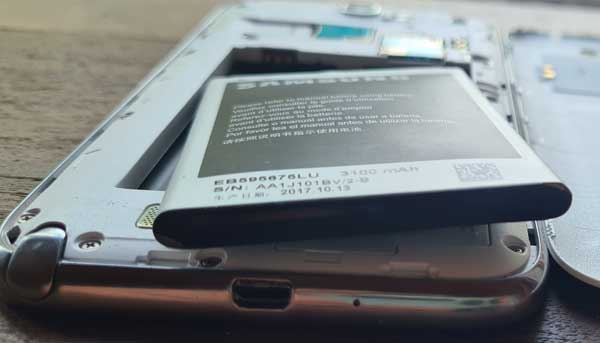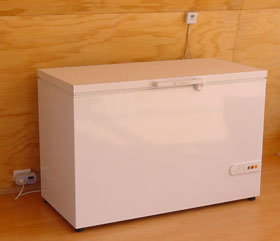Safe Storage, Charging and Disposing of Lithium Batteries: Minimizing Fire Risk
by Tom Chalko
Lithium batteries power many of our everyday devices, from smartphones and laptops to electric vehicles and power tools. While these batteries are efficient and long-lasting, they can pose a fire hazard if not stored, charged or disposed properly. Understanding and following best practices can significantly reduce the risk of fire and ensure safe use.
Types of Lithium Batteries and Fire Risk
Not all lithium batteries pose the same level of fire risk. Some chemistries are more prone to overheating and thermal runaway than others:
- Lithium Cobalt Oxide (LiCoO₂ - LCO): Found in smartphones, laptops, and cameras, these have high energy density but poor thermal stability, making them more prone to overheating and fire if damaged or overcharged.
- Lithium-Ion Polymer (LiPo): Used in power tools, drones, RC cars, and high-performance electronics. These are flexible and lightweight but have a higher fire risk due to their soft pouch design, which makes them more susceptible to physical damage.
- Lithium Manganese Oxide (LiMn₂O₄ - LMO): Used in medical devices and power tools. They have moderate thermal stability but can still overheat under extreme conditions.
- Lithium Iron Phosphate (LiFePO₄ - LFP): Found in electric vehicles and power tools, these are among the safest lithium chemistries with high thermal stability and lower risk of fire.
When lithium battery fails...
When a lithium battery catches fire, it undergoes a dangerous process called thermal runaway, which can be explosive and difficult to control. Here's what happens:
- Internal Short Circuit or Damage: This can be caused by physical damage, corrosion, manufacturing defects, overcharging, or overheating.
- Heat Buildup: The short circuit generates heat, increasing the battery's temperature rapidly.
- Electrolyte Decomposition: The electrolyte inside the battery is flammable. As it heats up, it can vaporise, increasing internal pressure.
- Thermal Runaway: Once a critical temperature is reached, a chain reaction occurs. The heat causes more internal short circuits, generating even more heat.
- Gas Release and Venting: The battery casing may rupture, releasing toxic gases, including carbon monoxide, hydrogen fluoride, and other harmful chemicals.
- Ignition and Fire: The released gases can ignite, leading to intense flames. The fire can be quite vigorous and difficult to extinguish. The gasses can propel the battery like a rocket to spread the fire to other objects.
- Explosion Risk: In severe cases, the rapid expansion of gases can cause the battery to explode. The larger the battery the larger would be potential explosion.
How to Handle a Lithium Battery Fire:
- Do Not Use Water: Water can exacerbate the fire due to the chemical reaction with lithium.
- Use a Class D Fire Extinguisher: These are designed for metal fires, but they’re rare. A Class ABC extinguisher can help suppress surrounding flames but won't stop the thermal runaway.
- Sand or Dirt: In emergencies, covering the fire with sand or dirt can help smother it.
- Evacuate and Call Emergency Services 000 : Lithium fires are extremely dangerous
Safe Storage of Lithium Batteries
1. Store in a Cool, Dry Place
Lithium batteries should be kept in a location with stable temperatures between 10°C and 25°C. Avoid placing them near heat sources, such as radiators, direct sunlight, or inside a parked car on a hot day.
2. Use Fireproof Storage Containers
To store lithium batteries, use fireproof containers, battery storage cases, or metal boxes to minimise the risk of fire spreading in case of thermal runaway. When storing multiple batteries in one container, ensure they are individually separated using dividers or fire-resistant pouches to prevent contact and reduce the risk of short circuits.
3. Avoid Contact with Metal Objects
Never store loose lithium batteries in pockets, bags, or drawers where they can come into contact with loose metal objects like keys or coins. This can cause short circuits, leading to overheating or fire.
4. Keep Away from Flammable Materials
Store lithium batteries away from combustible materials such as paper, cloth, or fuel sources to prevent fires from spreading if an issue occurs.
5. Inspect Batteries Regularly
Check batteries for signs of swelling, leaks, or physical damage. If a battery appears swollen, emits a chemical smell, or has visible damage, dispose of it safely at a battery recycling centre. At Foster tip ask staff about location of a dedicated shed for batteries and e-waste.

Storage of power tools batteries arranged in a $39 toolbox from Bunnings. The toolbox has many compartments. Powder coating provides initial electrical insulation. Each battery resides in its own fiberglass cloth pouch.
Safe Charging Practices
1. Use Battery Manufacturer-Approved Chargers
Always use the charger provided by the manufacturer or a certified alternative. Incompatible or cheap aftermarket chargers can overcharge or overheat the battery, increasing fire risk. Be very cautious of using so-called “fast” chargers with aftermarket batteries of unknown chemistry. Fast charging increases fire risks. Avoid charging old batteries of unknown chemistry.
2. Avoid Overcharging
Most modern lithium batteries have built-in protection circuits, but it is still best practice to unplug devices once fully charged. Prolonged charging can degrade the battery and increase the likelihood of overheating.
3. Charge on a Non-Flammable Surface
Avoid charging lithium batteries on beds, couches, or carpets. Instead, use a hard, non-flammable surface like a ceramic tile, a wooden desk or counter top to reduce the risk of fire spreading. Consider placing battery in a fireproof or metal box when charging it.
4. Do Not Charge Unattended
Whenever possible, monitor lithium batteries while they charge. Do not leave them plugged in overnight or unattended, as battery malfunctions can lead to overheating and potential fire hazards. If you decide to charge a lithium battery unattended, make sure that it is placed in a fireproof box while charging.
5. Avoid Extreme Temperatures While Charging
Charging lithium batteries in extremely hot or cold conditions can lead to damage and instability. Ideally, charge batteries at room temperature (20°C to 25°).
6. Disconnect and Remove Swollen Batteries
If a battery becomes unusually hot while charging or starts swelling, immediately unplug the device and place the battery in a fireproof container. Do not continue using it.

Swollen battery in old smartphone ready for safe disposal. Its surface is not flat
Proper Disposal of Lithium Batteries
Disposing of lithium batteries correctly is crucial for both safety and environmental protection.
1. Do Not Dispose of in Household Bins
Lithium batteries should NEVER be placed in general waste or recycling bins, as they can cause fires in landfills, waste collection and processing facilities.
2. Use Designated Drop-Off Points
In Victoria, Australia, households can recycle most batteries at permanent drop-off sites run by local councils. For Mt Best residents the location of battery disposal is Foster Transfer Station (tip), 2.5 km East of Foster on Sth Gippsland Hwy. Ask the tip staff to show you a dedicated shed for all batteries and electronic waste.
3. Prepare Batteries for Recycling
Before disposing or recycling, cover battery terminals with non-conductive tape to prevent short circuits and reduce fire risk during transportation and storage.
4. Environmental Regulations
The disposal of batteries is regulated under environmental laws to prevent pollution. The Australian Battery Recycling Initiative provides safety guidelines on the collection, storage, and transport of used handheld batteries. Use Designated battery Drop-Off Points to comply.
Final Thoughts
Lithium batteries are essential in modern technology, but their safety depends on responsible handling. By storing them properly, charging them safely, and regularly inspecting for damage, users can significantly minimise the risk of fire. Always follow manufacturer guidelines to ensure a safe and efficient battery life. Always dispose of damaged batteries responsibly.








